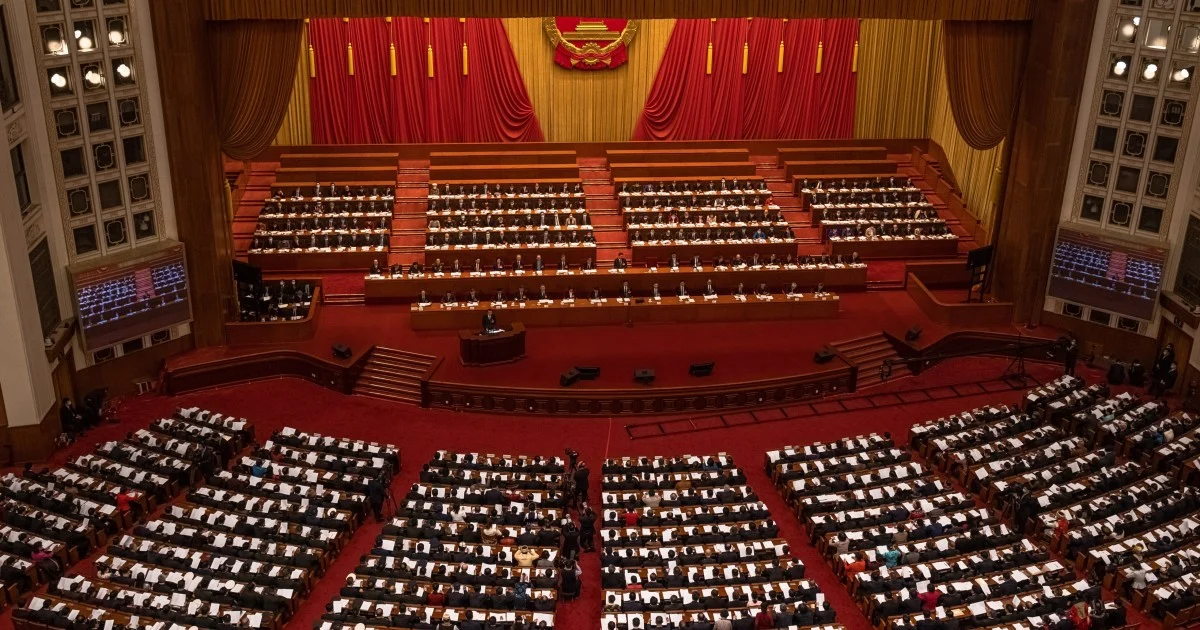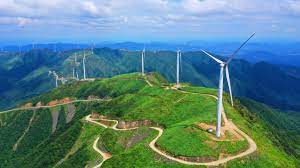China’s “dual carbon” goal, namely achieving carbon peak by 2030 and carbon neutrality by 2060, is a noteworthy topic at the 2022 Two Sessions. This year’s meetings set the tone for the next steps that China will take to achieve its “dual carbon” goal and its transition to a green economy.

(source: www.scmp.com)
The Two Sessions made it clear that to achieve low-carbon development, China needs to think big and start small, plan realistically and progress steadily. At the fifth session of the 13th NPC (National People’s Congress) on March 5th, President Xi Jinping pointed out that green transformation is not something that can be achieved overnight; it is a process of establishing the new model of development before abolishing the old one (先立后破xian li hou po), not the other way round. Premier Li Keqiang also mentioned xian li hou po in the Government Work Report, stating that “well-ordered steps” need to be taken “in accordance with overall planning.”
By announcing its “dual carbon” goal, China was showing to the world that it is acting proactively to address the global issue of climate change as a responsible world power. In his speech at the general debate of the 75th UN General Assembly in September 2020, President Xi stated that the Paris Agreement on climate change “charts the course for the world to transition to green and low-carbon development. It outlines the minimum steps to be taken to protect the Earth, our shared homeland, and all countries must take decisive steps to honor this Agreement.” President Xi also declared that China would scale up its Nationally Determined Contributions (NDCs) by adopting more vigorous policies and measures. “We aim to have CO2 emissions peak before 2030 and achieve carbon neutrality before 2060.”
It is a major strategic objective for the Chinese government to achieve the “dual carbon” goal as its responsibility to contribute to the “community of a shared future for mankind” and nationwide sustainable development. This means that when compared to the developed economies, extensive and intensive socioeconomic transformation for a developing country like China needs to take place in a shorter period of time, and therefore the country will have to overcome more challenges. The “dual carbon” goal requires China to take a longer-term perspective in its development planning instead of simply having short-term aims in mind, and to brace itself for a protracted endeavor. However, over the past year, for some industries and in some regions, there have appeared signs of rushing to implement this goal.
In regard to the budding problems in the process of achieving the “dual carbon” goal, the Two Sessions delivered a clear and decisive message: “campaign-style” carbon reduction is not an option.1 In my opinion, such a message will prove to be correct, timely, and pragmatic, and must consistently guide the implementation of the “dual carbon” goal.
In the foreseeable future, our primary task is to “correct deviations.” This can be interpreted from two perspectives: cognition-wise and action-wise.
First, correcting cognitive deviations. According to the national policy guidance announced at the Two Sessions, the “dual carbon” goal concerns national socioeconomic transformation. Achieving this goal requires cross-sector (e.g., cultural, economic, energy, environmental, and social) coordination, and its impact extends to every member and every aspect of our society. China needs to aim high, look far, yet start small. We cannot afford to ignore the challenges, nor can the “dual carbon” goal be rushed.
Second, correcting deviations in action. Over the past year, some organizations in China have resorted to campaign-style carbon reduction. They were front-loading the “dual carbon” goal in a few sectors, industries, and companies, hoping to “end the battle in one fell swoop.” As it turned out, such a simplistic approach did little to help the situation. Worse, it posed a considerable threat to high-quality economic development and long-term social stability.

(Souce: www.seetao.com)
Again, “dual carbon” is a long-term goal. China needs to take baby steps in steadily pursuing that end. There must be no more arbitrary and cut-across-the-board solutions as in the past. The Two Sessions could not have been clearer about that.
It is a highly formidable and complex task to achieve the “dual carbon” goal, which requires an improved top-down design and comprehensive use of market and administrative tools. With this goal in mind, China is building its “1 + N” system of climate policies, which includes undertakings to formulate implementation plans for different fields (e.g., energy, industry, urban and rural construction, transportation, agriculture, and rural areas) and key industries (e.g., iron and steel, petrochemicals, non-ferrous metals, building materials, electric power, oil, and gas). Other supporting policies are also in the making, covering technology, finance, carbon sink, accounting, supervision, and assessment. A holistic system of laws, standards, and institutions will nip any arbitrary slash-and-burn approach in the bud, so as to guarantee a successful implementation of the “dual carbon” project down the road.
The world today is experiencing changes unseen in a century, not only for climate, but for much more. Therefore, it is of particular contemporary significance for countries around the world to strengthen their dialogue and cooperation in addressing climate change. It is imperative that all countries come together to support global climate governance and leverage climate cooperation for environmental, economic, social, and cultural exchanges.
Now, given the fast-deteriorating climate change issue, coupled with the COVID-19 pandemic, mitigation and adaptation have become the two core tasks of global climate governance. If mitigation was the focus of the past efforts, broader and deeper cooperation in climate change adaptation is, more than ever, the urgent and immediate need. Climate change increases the odds of global food and health crises. For many climate-vulnerable countries, including those in Africa and small island developing countries, coronavirus outbreaks, with their significant impact on the international supply chain system, only exacerbated the difficulties they have already had. In the foreseeable future, enhancing resilience to climate change through cooperation should be at the top of the world’s agenda.
Under international law, climate change is one of “humankind’s common concerns” that requires cooperation and joint response. According to Article 3 of the United Nations Framework Convention on Climate Change (UNFCCC), the parties thereto should protect the climate system in accordance with their “common but differentiated” responsibilities and respective capabilities. The Article stipulates that efforts to address climate change may be jointly performed by interested parties. UNFCCC also emphasizes that developed countries should provide financial and technical support for developing countries. These are the cornerstone principles of global climate governance.
Exchanges in relevant science and technology have always been a focus of international cooperation in addressing the climate issues. Compared with pushing forward technological frontiers, working together on the basic science of climate change is much more important now and in the near future. What are the connections between climate change and natural disasters? What is the socioeconomic impact of climate change on a national or global scale? What is the global climate trend? And what does it mean for the food supply system of a country and the whole world? It behooves the international community to do more research on all these issues. Given the complex international situation, cooperation and exchanges in basic research should go beyond natural science to include dialogues and exchanges in cultural and social fields that are related to the climate change issues.

(Souce: m.stdaily.com)
Climate change is a topic that cuts across all aspects of our society. We need to cherish and leverage global platforms for climate cooperation. Specifically, we need to expand and extend such cooperation into the political, economic, cultural, and social spheres, so that all countries can address misunderstandings and iron out their differences in raising the awareness of building a “community of a shared future for mankind.”
As the world’s second largest economy and the largest developing country, China plays an indispensable role in promoting global cooperation in climate research and governance.
China is actively responding to climate change, with both the well-being of the nation and long-term human development at the center of its “dual carbon” initiative. The country is fulfilling its obligations under the UNFCCC in accordance with its capabilities and the characteristics of its stage of development. Through concrete actions, China is making significant contributions to global environmental protection while striving to solve its own environmental problems.
As mentioned above, China has pledged to scale up its intended NDCs by adopting more vigorous policy measures. In this way, China is redoubling its efforts to address global climate change, reaffirm its support for multilateralism, and reinvigorate the implementation of the Paris Agreement.
1. For more information about campaign-style carbon reduction, see “Explainer: What is China’s ‘campaign-style’ carbon reduction,” Reuters. Aug. 4, 2021, last accessed Mar. 26, 2022. https://www.reuters.com/business/sustainable-business/what-is-chinas-campaign-style-carbon-reduction-2021-08-04/